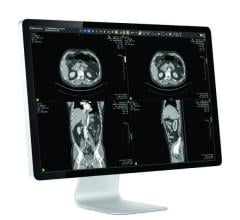
May 22, 2012 - As the picture archiving and communication systems (PACS) market has developed over the last decade, the variety of images, formats and procedures available in digital form in departmental silos has proliferated. Increasingly, healthcare providers are implementing central platforms to consolidate storage, thereby reducing PACS data migration costs and enabing better data mining and data sharing across departments.
These so-called vendor-neutral archives (VNA) collate, manage and store data from disparate PACS and other sources across the hospital site. Subsequently, out of the 1.4 billion new radiology studies captured by PACS in 2011 worldwide, 75 million were stored by VNAs, representing a 5.4 percent VNA-to-PACS attach rate. In 2016, this is forecast to grow to 31 percent worldwide, according to "The World Market for Medical Enterprise Data Storage – 2012," a new report from InMedica, a division of IMS Research (recently acquired by IHS).
InMedica defines a VNA as a medical image archiving platform, providing an open, standards-based architecture for database management, long-term storage, disaster recovery and secure lifecycle management of data from multiple imaging and non-imaging applications and modalities. It should support digital imaging and communications in medicine (DICOM) and non-DICOM data irrespective of data source or storage medium, making it application-neutral, as well as vendor-neutral.
There are different reasons why a hospital would implement a VNA, and these are represented in the types of VNA architecture (Fig.1). A hospital may want to simply minimize storage costs and reduce PACS switching costs in one radiology department; InMedica defines this as a Level 1 - single department DICOM VNA. It may want to share images across departments in a single site: Level 2.0 - multi-department DICOM VNA. In a community or hospital group, it may share images across multiple locations: Level 2.1 - multi-site DICOM VNA. In order to implement a cross-enterprise strategy, some hospitals may go a step further and seek to integrate image and non-image clinical data across departments using cross-document sharing (XDS) or similar protocols: Level 3.0 - multi-department XDS-based VNA; or use such protocols across multiple locations: Level 3.1 - multi-site XDS-based VNA.
“More than 65 percent of VNA studies worldwide in 2011 were either Level 2.0 or 2.1, showing that current demand is driven by the need to consolidate, centralize and share data across imaging departments,” commented Theo Ahadome, healthcare IT market analyst at InMedica. “Increasingly, the integration of non-image data to create a full enterprise-strategy is being implemented. As this occurs, and VNA storage volumes increase, they are projected to erode the share of storage volumes held by PACS.” Reflecting this, incremental storage capacity from VNA is projected to reach 114 petabytes worldwide in 2016, compared to 140 petabytes for PACS.
These trends and more are discussed further in InMedica’s report, "The World Market for Medical Enterprise Data Storage - 2012."
For more information: www.in-medica.com


 March 06, 2024
March 06, 2024 




